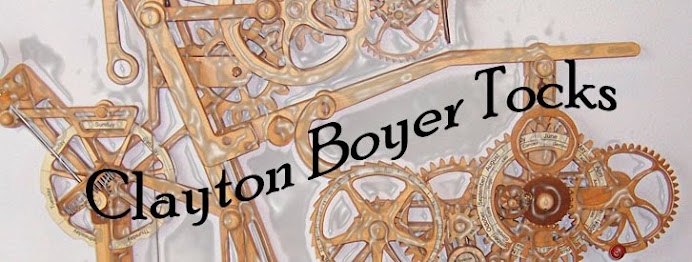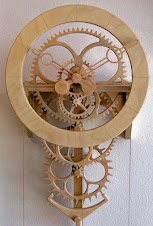Hello. I am very interested in your rolling ball clock.
What is used as the drive spring? Is it simply a normal clock winding spring? All the clocks I have built so far are weight driven but this looks like nothing I have seen before.
Kind regards.
Dean
Aloha Dean, you are quite correct. As you look through my designs you will not see a single motor driven clock or sculpture. I have always preferred gravity as my source of power. I have eschewed both motors and springs until fairly recently.
The reason is clock springs tend to be quite powerful when first wound, and then get progressively less and less powerful as they wind down. Instead of using a fusee to regulate a spring's decreasing power, I've opted for rocks, and gravity to drive my mechanisms.
However, I have had wonderfully good luck with a new kind of spring called a "constant force" spring. As its name implies, it gives a constant force throughout its entire length.
 |
| Steampunk Impulse Engine |
Many escapements are sensitive to changes in the force applied to them. For example the verge and foliot escapement is intensely sensitive to changes in force applied, so I could not use a spring to run any such escapement. The Wee Willie was the first clock to have a constant force spring as its power. The Wee Willie has a verge and foliot escapement and would not work efficiently with a normal clock spring, but operates beautifully with a constant force spring.
Then I created the Epicyclic with a constant force spring, then a version of my HO design, and recently the rolling ball clock, "Celebration" and now the Steampunk Impulse Engine all run on various constant force springs.
But actually my first constant force mechanism was my Zinnia kinetic sculpture. I created that design about five years ago (but only recently released it to my site), and it has been running wonderfully all this time on my living room wall.
 |
| Zinnia |
Maybe someday I will get around to using a motor in one of my designs, but for now gravity and these wonderful constant force springs seem the way to go.
Enjoy! Clayton



